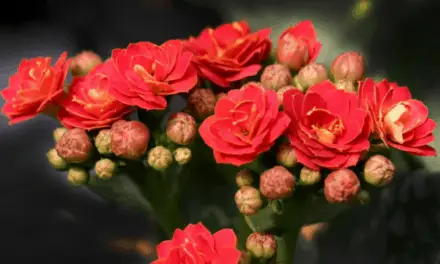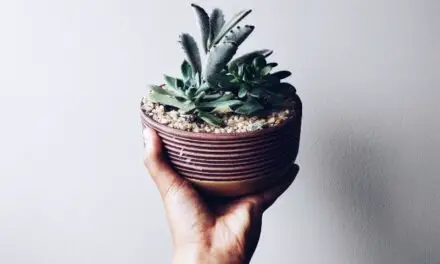If you’ve recently purchased an Astilbe plant, you might be wondering how soon you can expect to enjoy those stunning blooms brightening up your garden.
Astilbes are gorgeous and crowned with amazing feathery flowers, and you might be wondering if you’ll see them bloom the first year?
Table of Contents
Will A Astilbe Bloom The First Year?

Your Astilbe will need a bit of time than the first year to establish itself and flower to its fullest potential.
You may see a couple of small blossoms in the first year, but you’ll likely see many more blooms in the second year.
Being a perennial, it often uses the first year to grow its roots and foliage, rather than focusing on flowers.
It can often take until year 3 before Astilbes fill in and bring your garden to life with color.
How To Encourage Your Astilbes To Bloom The First Year?
These plants are popular in shady patches.
They tend to grow well if they get some sun, but they can manage even in full shade, which makes them great if you have a woodland area or a very shaded part of your garden.
If you want to maximize the chance of seeing flowers in the first year, however, you should give them the optimum growing conditions, and this will involve making sure they get at least a little sunlight.
Astilbes also like well-drained soil and plenty of food.
You should add lots of compost when planting your Astilbe; this will encourage it to grow fast, and will also help to provide moisture.
The plant will have more food which it can – hopefully – put into some flowers in its first year.
If it fails to bloom in the first year, don’t worry.
Next year, you should have a strong, healthy plant that will be covered in those amazing spikes of color.
When Should I Plant Astilbes?
They are best planted in the spring or the autumn; the soil is cooler and damper then, which helps the roots to establish themselves well.
If you plant them in the summer, the roots may struggle to grow, and you almost certainly won’t see any flowers for that year, as they’ll be focused on settling into the ground.
Related Article: Will Aquilegia Flower Twice? (And How To Encourage It)
Plant Different Varieties Of Astilbes
You should look to plant several Astilbes; you are more likely to get a long flowering season if you have a few different varieties in the ground.
Early Blooming Astilbes
The early ones can bloom as soon as the end of spring (these will be unlikely to bloom in the first year as they simply won’t have been growing for enough).
Spring Blooming Astilbes
To ensure a long flowering season in later years, go for some spring-flowering ones, such as Fanal, which has red blossoms, Avalanche, with white flowers, or Europa, with pale pink colored blooms.
Mid-Season Blooming Astilbes
The mid-season flowering varieties include Bridal Veil, which is unsurprisingly white, Amethyst, which is lilac, and Montgomery, which is deep purple.
Late Blooming Astilbes
Late ones might continue to the start of autumn.
If you really want blossoms in the first year, it’s best to opt for one of the late-flowering varieties.
These will have more time to grow before their flowers come in, and may have a better chance of flowering than an early flowering plant.
For these late ones, you can choose Sprite, which has pink flowers, Superba, which has purple flowers, or Moerheimi, which has white flowers.
How To Care For Your Astilbes So They Flower Early?
If you want to see some early blooms, providing the right conditions for your plants will be vital.
Fertilization
You may not be able to force your Astilbes to flower in their first year, but a good amount of fertilizer when you plant them may help.
These plants need phosphorus to flower so a 5-10-5 or 10-10-10 fertilizer works well.
It will encourage strong early growth and ensure the plant has plenty of food as it establishes itself and settles in.
Proper Watering
Regular watering will also make sure that the young plants have everything they need.
Go for deep watering to encourage them to get their roots far down into the soil; this promotes healthier growth and stronger plants.
Water Astilbes enough so that their soil is always moist but never soggy or bone dry.
The Right Amount Of Light
Don’t plant your young plants in full sun; their leaves will burn and they will likely die.
Astilbes like to be in shaded areas that still receive some indirect and morning sunlight.
To give yourself some chance of seeing blooms in the first year, make sure you plant in the spring.
Plants that go into the ground in autumn won’t flower until the following year.
Why Is My Astilbe Not Blooming?
Your Astilbe is not blooming because it is either getting not enough or too much sun, not being watered properly, not being fertilized, or not being grown in fertile well-drained soil.
The Wrong Lighting Conditions
Astilbes like indirect and weak sunlight.
They bloom fullest when they a planted in a location that gets a little direct morning sunshine and then dappled afternoon sun for the rest of the day.
They usually need lots of light to flower well but need to be kept out of full afternoon sun.
The Wrong Soil Type And Watering Routine
Astilbes like organic, well-draining, and acidic soil.
Their soil needs to be kept moist but not soggy and not allowed to dry out too much.
Keep checking the soil and water when it’s turning from slightly moist to dry.
Not Fertilizing
Astilbes are heavy feeders and may not flower for you without being fertilized first.
These plants require phosphorus to flower so go for a 5-10-5 or 10-10-10.
Rake a few granules of fertilizer into their soil a couple of weeks before planting.
Once established, fertilize in spring using the same method.
When fertilizing established Astilbes, ensure that the soil is moist but their foliage is dry.
This will save you from burning your plants.
How Do You Keep Astilbe Blooming?
In optimum conditions, you can keep your astilbe blooming for up to 30 days.
To keep them blooming for as long as possible, you’ll need to provide the optimum growing conditions.
These plants need to be planted in partial to full shade and in rich well-draining soil.
You can also mulch around the plants to help lock in that moisture and drive the growth of flowers.
When these plants dry out they quickly become stressed and are less likely to hold onto their flowers.
You want to water astilbe deeply when you plant it and then water it deeply about once per week thereafter.
Astilbe grows to its fullest when kept in partial shade and given some morning sunlight.
These plants will not flower to the best of their ability if they get afternoon sun or if they are not watered enough.
They like to have their soil moist but not too dry or soggy.
You can also keep astilbe blooms longer in your garden by planting early, mid-season, and late-flowering varieties.
By planting varieties that flower throughout the spring and summer you can enjoy beautiful astilbe blooms from May right through to August.
How Long Do Astilbe Plants Bloom For?
Astilbes usually bloom for two to four weeks in mid to late summer depending on which variety of the plant you have.
Early blooming astilbes usually begin flowering by the end of May or in June while late blooming ones normally start flowering by the end of July or the beginning of August.
Final Thoughts
Astilbes are beautiful plants that display colorful feathery blooms that bring your summer garden to life.
They are rare in that they are shade-lovers and can be grown in areas where there is little light.
They are also low-maintenance and don’t require much work.
There’s no guarantee you’ll see flowers in the first year, but you’ll likely get a rush of them in the second.




